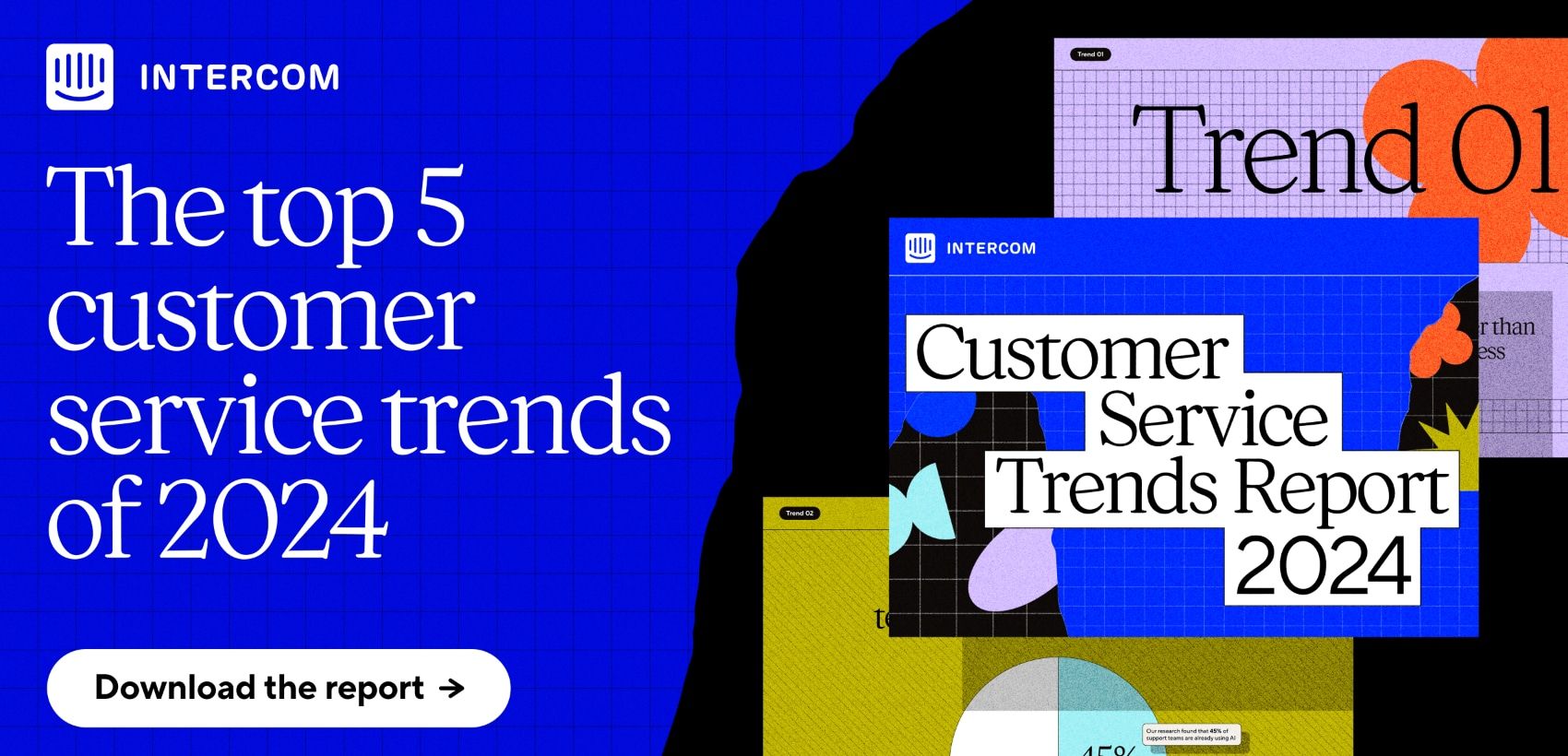
Getting M.O.R.E. from your support team: A 4-step framework for boosting morale
Main illustration: Sara McGrath
From run-of-the-mill password resets to sensitive customer complaints that require a more human touch, it’s easy to feel like you’re merely reacting to customer queries instead of providing strategic support.
Customer support has traditionally been seen as a reactive job. At Intercom, we support our customers in troubleshooting and ultimately resolving their requests through a blend of proactive, self-serve, and human support. As with other customer-facing environments, this requires sustained energy, empathy, and enthusiasm to meet and exceed customer expectations.
“Through personal development and the adoption of a growth mindset, I’ve transformed my relationship with both customers and teammates”
But the reality is that demanding customers, high attrition rates, and the sheer volume of customer queries can compound to exhaust even the most experienced support rep. This pressure can have a ripple effect across your department – depleting team morale, impacting performance, and damaging your relationship with your customers. Without the space to reflect and recharge, your team can quickly become burnt out as the gulf between customer needs and team resources grows.
As a Senior Customer Support Engineer at Intercom, I’ve had access to internal leadership development that has expanded my understanding of what success looks like in customer support. Through personal development and the adoption of a growth mindset, I’ve transformed my relationship with both customers and teammates. So what’s the secret to boosting a team’s productivity while maintaining morale? You need to inspire your team to look for M.O.R.E.
Looking for M.O.R.E.
The most important lesson I learned was to always look for M.O.R.E. This means leveraging Motivation, Optimism, Resilience, and Empathy to perform at your best. Although each trait holds individual value, together they form a powerful personal strategy to empower yourself, your customers, and your teammates.
1. The two types of Motivation
You’ve probably heard of the phrase “action before motivation.” This means that instead of waiting until you feel like doing something, you should just do it, which in turn will make you feel more motivated about completing the task. But did you know that there are two specific types of motivation?
In Daniel H. Pink’s book, Drive: The Surprising Truth About What Motivates Us, he explores how we are driven by both extrinsic and intrinsic forces in the workplace.
“There’s a healthy sweet spot to be found between the two, and I’ve found that tapping into both types of motivation is key for maintaining a positive attitude in support”
Extrinsic motivation comes from wanting a reward or trying to avoid punishment. As Pink says, “The problem with making an extrinsic reward the only destination that matters is that some people will choose the quickest route there, even if it means taking the low road.”
Intrinsic motivation, on the other hand, stems from performing an activity for its own sake, and feeling rewarded by this, despite the lack of an external reward. “For artists, scientists, inventors, schoolchildren, and the rest of us, intrinsic motivation – the drive to do something because it is interesting, challenging, and absorbing – is essential for high levels of creativity.”
There’s a healthy sweet spot between the two, and I’ve found that tapping into both types of motivation is essential for maintaining a focused mindset in support. Setting personal and professional goals through project work, improving our internal workflows, and making our processes more efficient, are things I enjoy that create learning opportunities for me while satisfying my intrinsic motivation.
Alongside this, I find it rewarding to have the autonomy in my role to speak with our customers in a more personal and conversational way using emojis and GIFs. This playful communication allows customers to get a better sense of who I am while I resolve their issues and it helps with relationship building. Sidenote: my favorite GIF to send is Moira Rose from Schitt’s Creek shouting “Courage!”
Finding work that blends your self-driven intrinsic motivation with the autonomy of extrinsic motivation can help you maintain a positive mindset when working in a busy support role.
2. Maintaining Optimism in customer support
Striving for an optimistic view of others can make a huge difference in any job. This mentality is particularly important in the support ecosystem, where the quality of support is dependent on the quality of the relationships on your team. A transformative attitude we adopt in Intercom is assuming best intent – giving people, whether they’re customers or colleagues, the benefit of the doubt, and trusting that they’re doing things to their best ability.
This mentality extends beyond support to the wider company: we’re all working towards the same objective, whether it’s the company’s success, helping customers to use our products, or engineering better solutions for use cases. Adopting an optimistic outlook will help you to maintain a fair and balanced opinion of your customers and your colleagues.
3. Resilience in the face of customer expectations
You may have a colleague who always seems to bounce back quickly when things don’t go as planned – this is resilience in action. You’ll be relieved to hear that it isn’t a fixed trait, and can be learned. The five pillars of resilience consist of self awareness, mindfulness, self care, purpose, and positive relationships.
Resilience is crucial when working in a busy support role as it allows you to learn from your experiences and move forward, rather than dwelling on your past mistakes or challenging interactions. With customer expectations at an all-time high, it’s no surprise that this adaptability is important when working with high volumes of customer queries.
“Preparing yourself as best you can and accepting change can help you to rise to the challenge and inevitably strengthen your resilience over time”
Context switching between different ongoing customer issues is an excellent example of this need for resilience. Large volumes of support queries can mean your support team handles myriad topics related to your product on any given day. Multitasking like this takes high levels of sustained energy and can mentally exhaust your support team if they’re already feeling depleted in their roles.
Alongside customer requests, adapting to internal change also requires resilience in a support role. Product launches, updated internal KPIs, and changes to well-established processes can throw you off course if you haven’t built up your emotional reserves. Preparing yourself as best you can and accepting change can help you to rise to the challenge and inevitably strengthen your resilience over time.
4. Tapping into Empathy
If you’re familiar with how we approach support at Intercom, you’ll have heard the phrase “connecting with empathy” used time and again. Empathy is probably the most important trait to me, and I try to filter interactions with my team and customers through an empathetic lens.
As Brené Brown, research professor and author of Daring Greatly, says, “empathy is connecting with the emotion that someone is experiencing, not the event or the circumstance.” A handy tip for approaching a customer or teammate with empathy is to simply start a sentence with “I understand.” These two words can transform a potentially heated discussion into a productive conversation that builds trust and strengthens your relationship. It helps me to consider what a customer or colleague is feeling and find ways to connect and support them in a way that works best for their situation.
Maintaining a growth mindset
It’s often said that your support team is your company’s first line of defense: every day support reps work tirelessly to guide your customers through bugs, queries, and feedback. But what I’ve come to learn at Intercom is that, through professional self-development, you can significantly increase your optimism, resilience, and empathy to deliver better results and foster stronger relationships.
By looking for M.O.R.E., I’ve been able to boost my performance while keeping it personal with customers; connecting with them as fellow human beings, instead of taking an “Us vs Them” view of the situation. After all, we’re all in this together.








